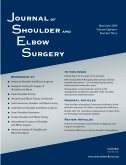
SHOULDER & ELBOW
Vacuum assisted glenoid fixation is an effective cementing technique for durable fixation
This report has been verified
by one or more authors of the
original publication.
J Shoulder Elbow Surg; 2011; 20(7): 1050-1060
96 patients with non-inflammatory arthritis, who were scheduled for a total shoulder arthroplasty, were randomized to receive a vacuum assist (weep-hole) technique for the implantation of the glenoid component or the traditional third generation methods. The surrogate of the adequacy of fixation being the area of bone cement measured by radiographs. It was found that the vacuum assist had a greater amount of bone cement than the conventional method by 14.8%, with the average area of cement under components keel and peg inserted with the standard techniques being 420 mm2 and 482 mm2 with vacuum technique.
Unlock the full ACE Report
You have access to {0} free articles per month.Click below to unlock and view this {1}
Unlock NowCritical appraisals of the latest, high-impact randomized controlled trials and systematic reviews in orthopaedics
Access to OrthoEvidence podcast content, including collaborations with the Journal of Bone and Joint Surgery, interviews with internationally recognized surgeons, and roundtable discussions on orthopaedic news and topics
Subscription to The Pulse, a twice-weekly evidence-based newsletter designed to help you make better clinical decisions
Exclusive access to original content articles, including in-house systematic reviews, and articles on health research methods and hot orthopaedic topics
Or upgrade today and gain access to all OrthoEvidence content for just $1.99 per week.
Already have an account? Log in


Subscribe to "The Pulse"
Evidence-Based Orthopaedics direct to your inbox.
{0} of {1} free articles
Become an OrthoEvidence Premium Member. Expand your perspective with high-quality evidence.
Upgrade Now













































































